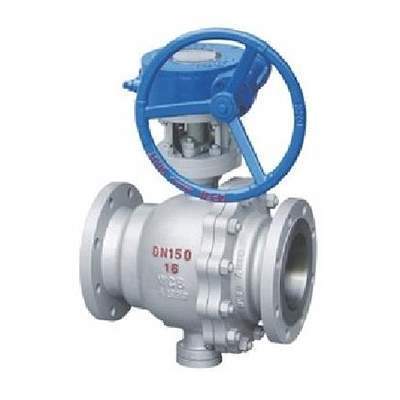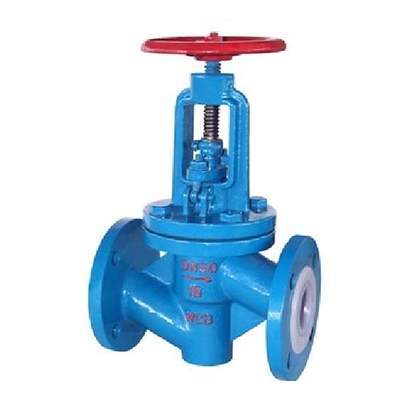Welcome to My Blog!
Before we dive into the content, if you’re interested in our products or have any questions, please feel free to visit our Contact Us page on the website. Our team is ready to assist you with inquiries, orders, or any support you may need.
Now, let’s get started on our journey together. I hope you find the content here insightful, engaging, and valuable.
Introduction

A check gate valve is a type of valve designed to allow fluid to flow in one direction while preventing backflow. It combines the features of a traditional gate valve with the backflow prevention function of a check valve. Check gate valves are widely used in water treatment, industrial pipelines, HVAC systems, and fire protection networks due to their reliable performance and ability to maintain system integrity.
Understanding how a check gate valve works is essential for selecting the right product. The valve operates by lifting a gate or disc when fluid flows in the intended direction. When flow reverses, the gate automatically closes, preventing backflow and protecting the system. Unlike standard gate valves, which only control flow, check gate valves actively prevent reverse flow, making them critical in applications where system protection is a priority.
Material Selection for Check Gate Valves
The material of a check gate valve directly affects its durability, corrosion resistance, and suitability for different fluids. Common materials include:
- Stainless Steel: Ideal for corrosive environments and high-temperature applications. Offers excellent longevity and minimal maintenance.
- Carbon Steel: Suitable for standard industrial applications with moderate temperature and pressure requirements.
- Cast Iron and Bronze: Often used in water supply and HVAC systems for their cost-effectiveness and corrosion resistance.
Selecting the correct material ensures the valve can withstand the operational conditions and fluid type, preventing premature wear or failure.
Valve Size and Pressure Rating
Choosing the right size and pressure rating is crucial for optimal performance. An undersized valve can restrict flow, while an oversized valve may lead to improper sealing.
- Valve Size: Determine the appropriate size based on pipeline diameter, flow rate, and system pressure.
- Pressure Rating: Check gate valves are rated using PN (pressure nominal) or PSI. Ensure the valve rating matches or exceeds the system’s operating pressure.
- High-Pressure Considerations: For industrial or high-pressure pipelines, select valves specifically designed to handle extreme conditions.
Correct sizing and pressure rating help maintain system efficiency and prevent mechanical failures.
Connection Types
Check gate valves are available with various connection types, each suited for specific pipeline configurations:
- Flanged Connections: Provide secure attachment to pipelines and are easy to maintain or replace.
- Threaded Connections: Ideal for small-scale applications but may not be suitable for high-pressure systems.
- Welded Connections: Offer permanent, leak-proof installation for critical pipelines.
Selecting the right connection type ensures ease of installation, durability, and leak prevention.
Valve Design and Operation
Check gate valves come in different designs that affect flow characteristics and backflow prevention:
- Single vs. Double Check Gate Valves: Double check designs offer enhanced protection against backflow, particularly in industrial or high-risk applications.
- Lift Gate vs. Swing Valves: Lift gate valves provide tight sealing, while swing valves offer low-resistance flow and are easier to maintain.
- Flow Impact: The valve design influences pressure drop, flow rate, and system efficiency. Consider the operational needs before choosing a design.
Industry Applications
Check gate valves are highly versatile and used across multiple industries:
- Water Treatment and Distribution: Ensures unidirectional flow and prevents contamination in municipal systems.
- HVAC Systems: Maintains proper circulation and prevents reverse flow in heating and cooling networks.
- Fire Protection Systems: Provides reliable backflow prevention in sprinkler and fire suppression systems.
- Industrial Pipelines: Protects pumps, compressors, and other equipment from damage caused by reverse flow.
Understanding application-specific requirements helps in selecting the right valve type and material.
Installation Considerations
Proper installation is critical for the longevity and performance of a check gate valve:
- Orientation: Install the valve in the correct flow direction to ensure proper operation.
- Positioning: Maintain adequate clearance for maintenance and operation.
- Tools and Equipment: Use appropriate tools to avoid damaging flanges, threads, or seals.
- Best Practices: Avoid installing near bends or pumps where turbulence may prevent proper valve closure.
Following installation guidelines minimizes the risk of leaks and operational failures.
Maintenance and Troubleshooting
Routine maintenance ensures long-term performance:
- Inspection and Cleaning: Regularly check for debris or scaling that can prevent full closure.
- Common Problems: Leaks, sticking gates, or unusual noises often indicate wear or misalignment.
- Extending Lifespan: Lubricate moving parts if applicable and replace worn seals promptly.
Proactive maintenance reduces downtime and prevents costly repairs.
Compliance and Certification
Many industrial and municipal systems require check gate valves to meet strict standards:
- ISO and ANSI Standards: Ensure the valve meets international quality and safety benchmarks.
- Industry-Specific Certifications: Some applications, such as fire protection, may require additional certifications.
- Safety and Quality Compliance: Verify documentation to guarantee the valve is suitable for your system’s requirements.
Purchasing Tips and Supplier Selection

When buying a check gate valve, consider the following:
- Price Comparison: Evaluate cost relative to material quality, design, and certifications.
- Supplier Reliability: Choose reputable manufacturers with proven experience in industrial or municipal applications.
- Custom Options: For unique systems, check availability of custom sizes, materials, or connection types.
- Bulk Orders: For large projects, negotiating with suppliers can reduce costs and ensure consistent quality.
Selecting a reliable supplier ensures you receive durable, high-quality valves that meet system specifications.
Conclusion
Choosing the right check gate valve requires careful consideration of material, size, pressure rating, connection type, design, industry application, installation, and maintenance requirements. By understanding these key specifications, engineers and facility managers can ensure optimal system performance, prevent backflow, and extend the service life of their equipment. Proper selection and maintenance not only improve efficiency but also safeguard critical infrastructure in water, HVAC, fire protection, and industrial systems.
FAQ
What is a check gate valve used for?
A check gate valve is used to allow fluid to flow in one direction while preventing backflow, protecting pipelines and equipment in water, HVAC, and industrial systems.
How do you install a check gate valve?
Install the valve in the correct flow direction, ensure proper alignment, and use the recommended connection type, such as flanged or threaded, for secure operation.
What materials are check gate valves made from?
Common materials include stainless steel, carbon steel, cast iron, and bronze, chosen based on fluid type, pressure, and environmental conditions.
How do you maintain a check gate valve?
Regularly inspect for debris, clean the valve if needed, check seals, and replace worn parts to ensure smooth operation and prevent leaks.
What factors should be considered when choosing a check gate valve?
Key factors include material, valve size, pressure rating, connection type, valve design, and the specific application requirements.
Need Help Choosing the Right Check Gate Valve?
If you’re unsure about which check gate valve is best for your system or application, our experts are here to guide you. Contact us today for a personalized consultation, and ensure your pipeline or system operates efficiently and safely. Don’t wait until problems arise—get in touch now to protect your equipment and maintain smooth, reliable flow!
